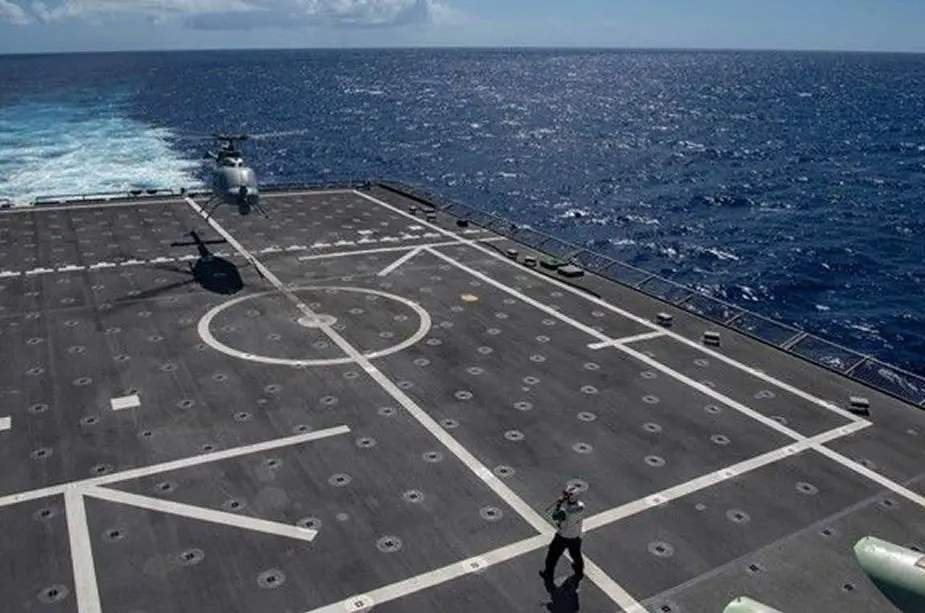Breaking news
US Navy deploys MQ-8C Fire Scout aboard USS Jackson in Indo-Pacific.
According to a PR published by Northrop Grumman on May 23, 2022, MQ-8C Fire Scout, the U.S. Navy’s autonomous, runway-independent helicopter system, made its second operational deployment, and first deployment to the Indo-Pacific Area of Responsibility aboard USS Jackson providing military commanders greater maritime intelligence, surveillance, reconnaissance, and targeting capability.
Follow Navy Recognition on Google News at this link
 MQ-8C Fire Scout autonomous helicopter aboard USS Jackson(Picture source: U.S. Navy)
MQ-8C Fire Scout autonomous helicopter aboard USS Jackson(Picture source: U.S. Navy)
MQ-8C Fire Scout continues to deploy on littoral combat ships with future deployments planned on Constellation-class guided-missile frigates and operations from shore sites under the Expeditionary Advance Base Operations concept, including potential logistics cargo role. Other potential future roles for the MQ-8C include mine countermeasures and anti-submarine warfare.
In addition to providing critical decision-making, MQ-8C Fire Scout is supporting advanced capabilities including demonstrating manned-unmanned teaming (MUMT), enabling sensor information sharing across a distributed force, further increasing survivability, reducing risk to and burden on manned aircraft, and enhancing weapons capacity. Fire Scout is furthering the successful integration of unmanned platforms and manned assets at sea.
With Fire Scout’s ability to operate at extended ranges required for future warfighting activities, the autonomous helicopter system provides responsive, reliable, and real-time surveillance capabilities and operates from both air-capable ships and developed or austere landing zones.
The MQ-8C Fire Scout’s airframe is based on the commercial Bell 407, a mature helicopter with more than 1,400 airframes produced and over 4 million flight hours.
The MQ-8C Fire Scout is an upgrade to the existing “B” variant, which first deployed in 2009. With its larger airframe and its ability to autonomously take-off and land on any aviation-capable ship, the “C” can fly nearly twice as long and carry three times more payload than its predecessor.



























